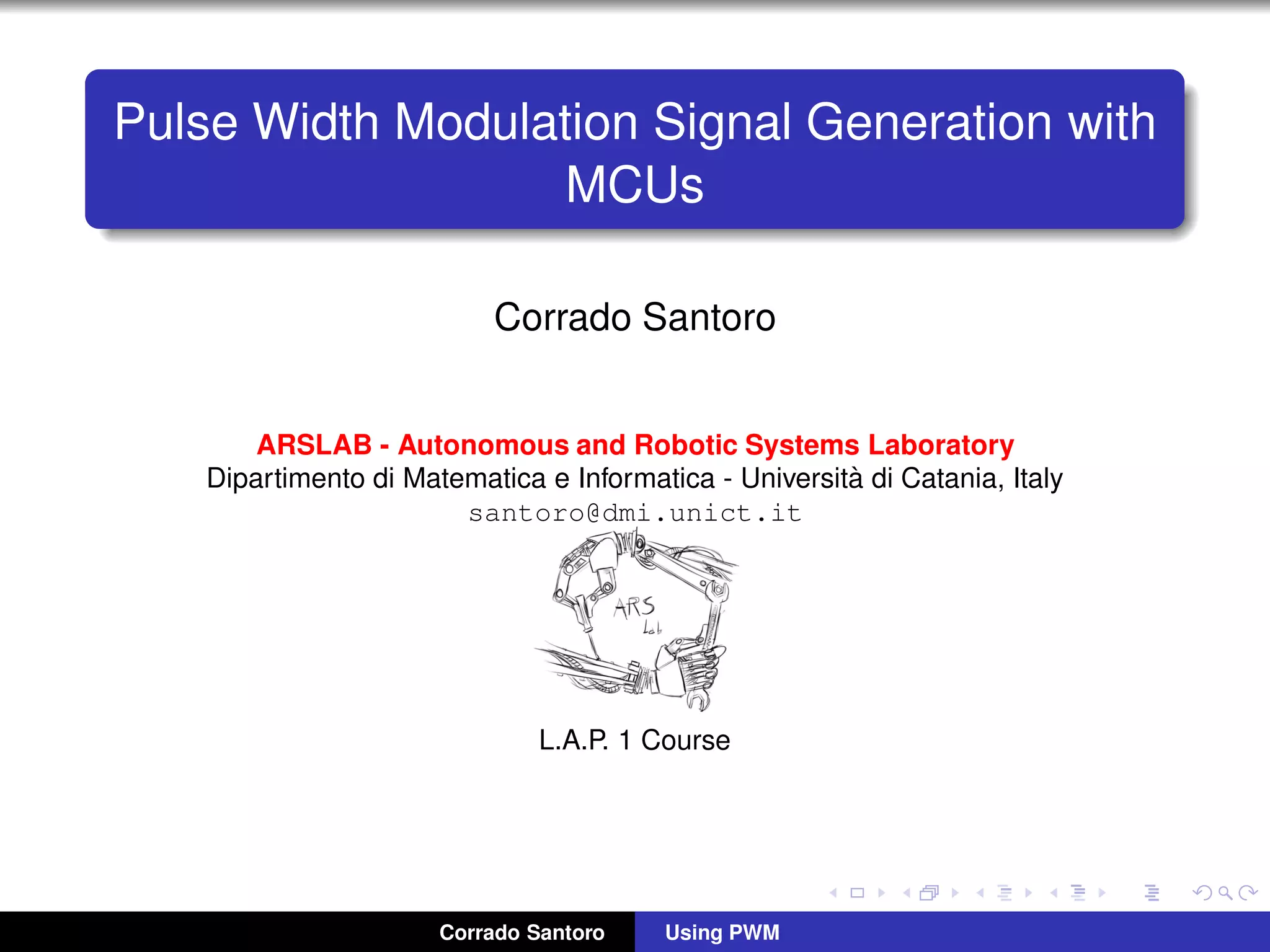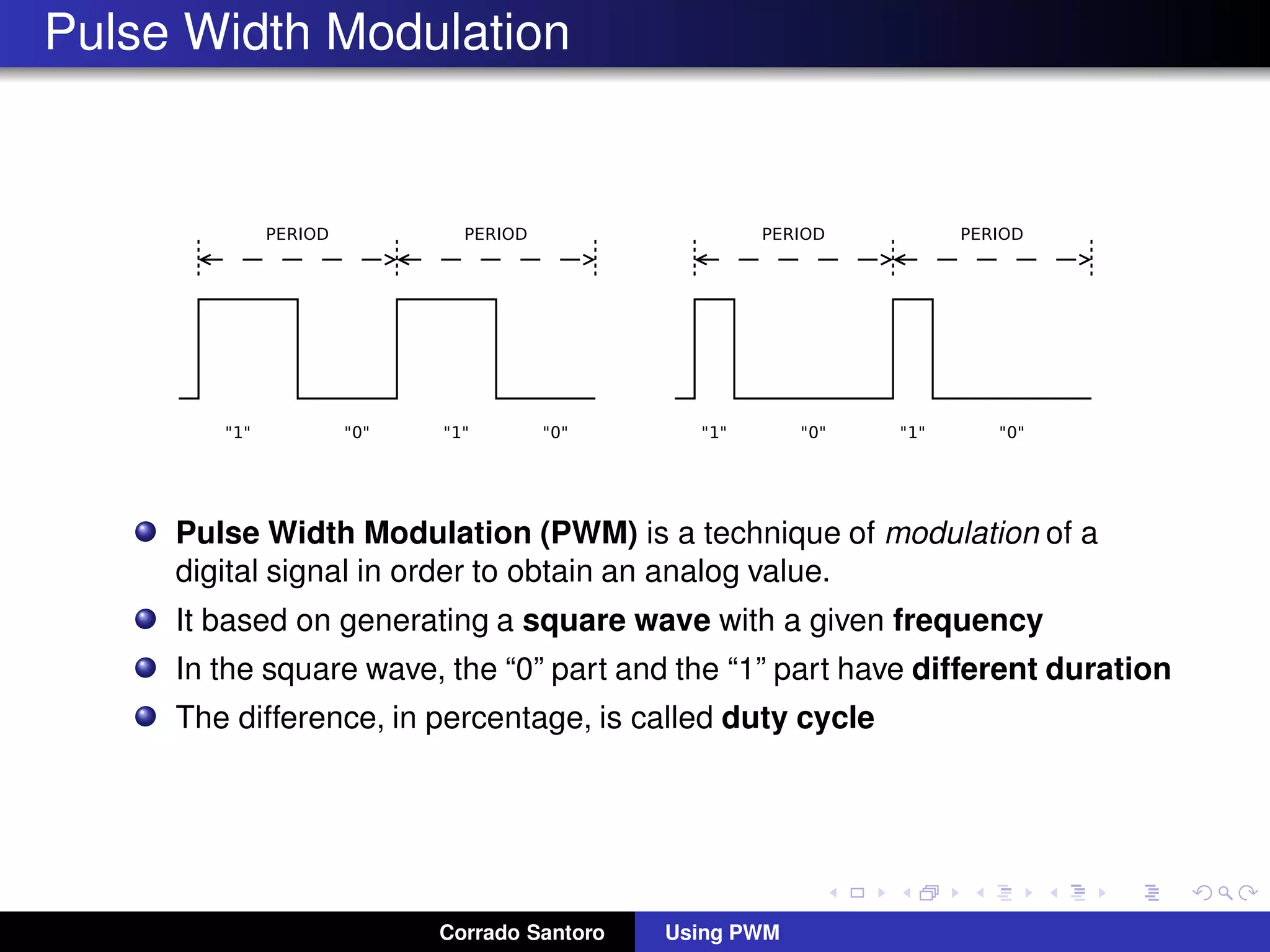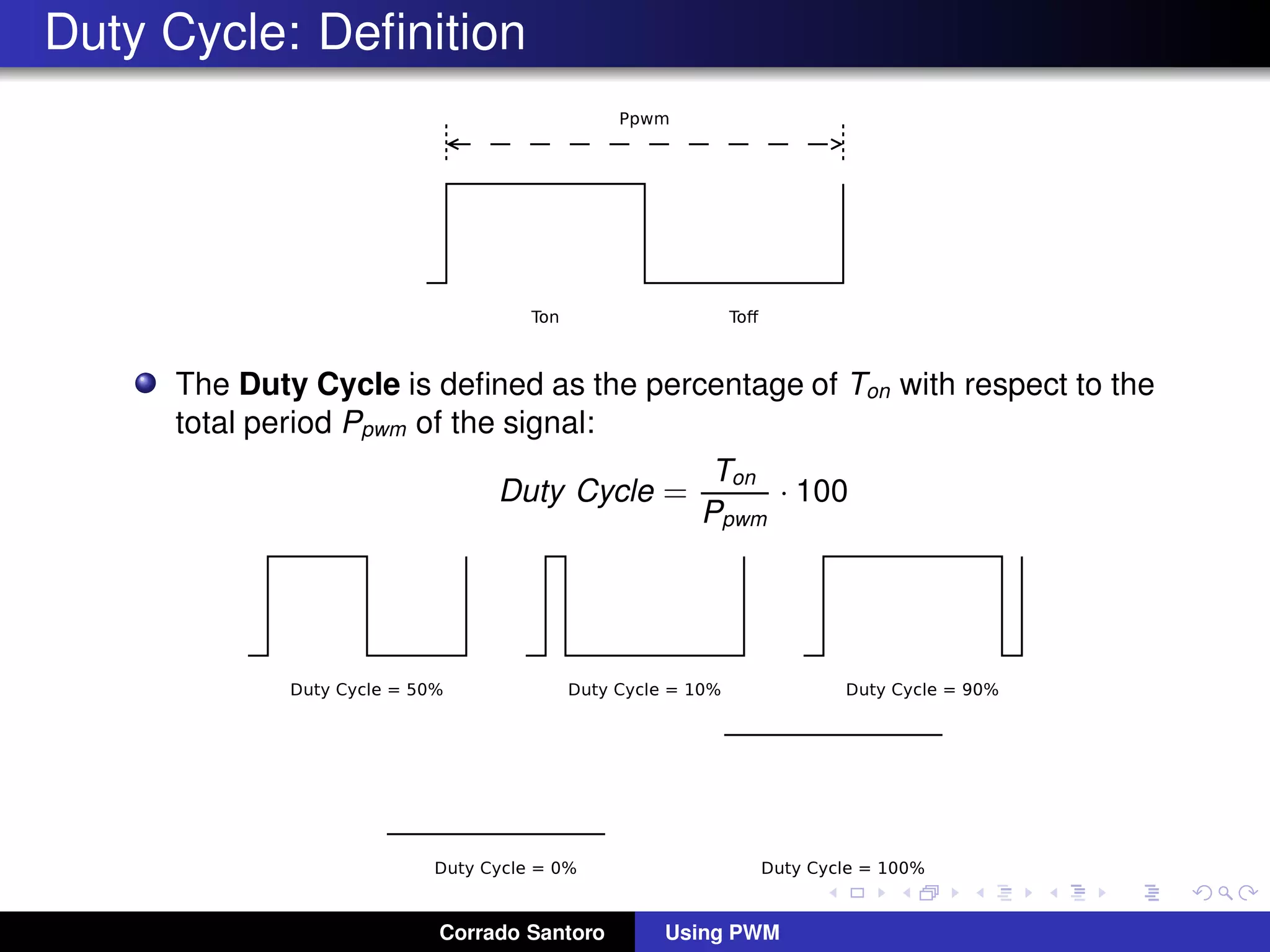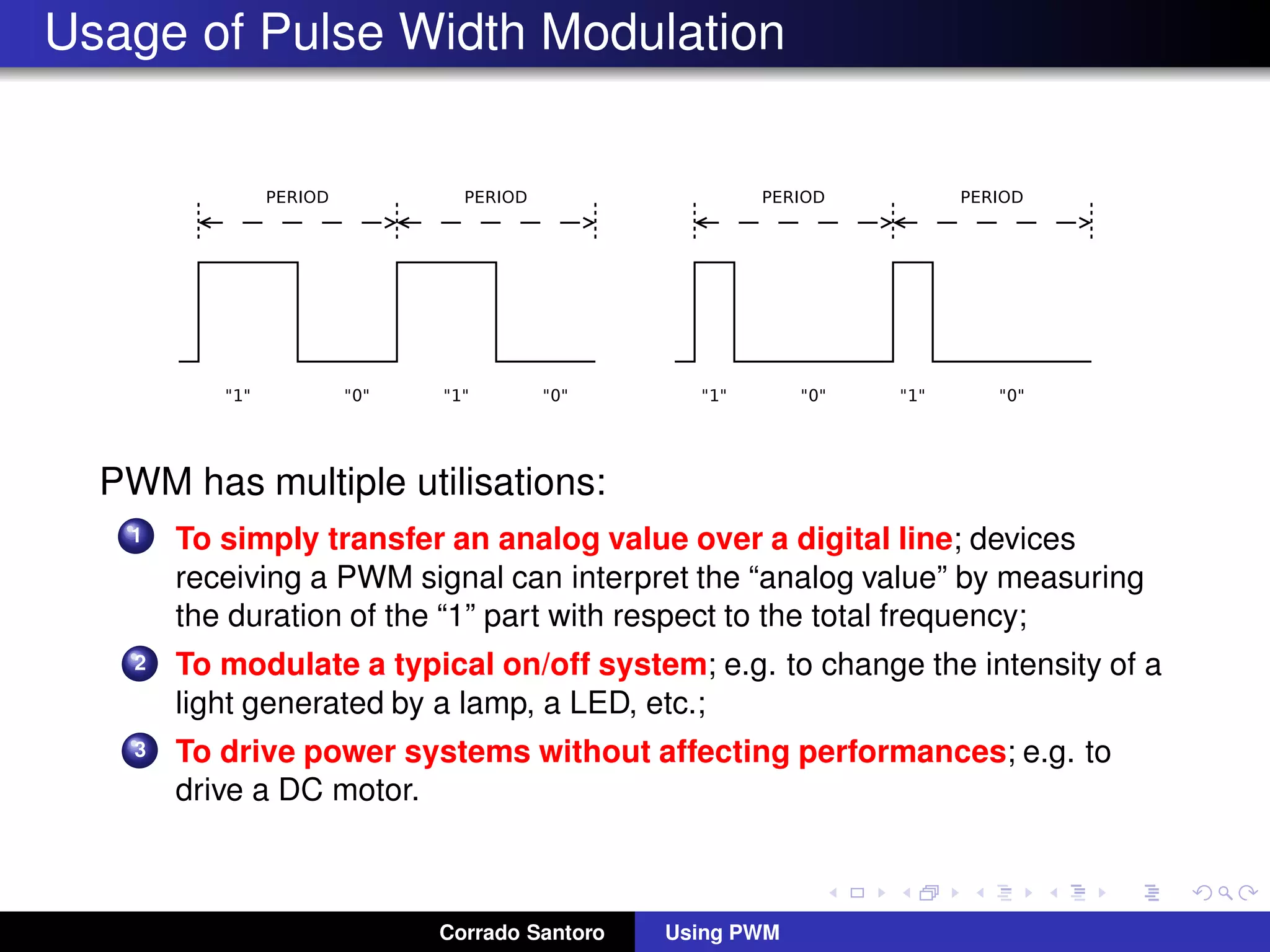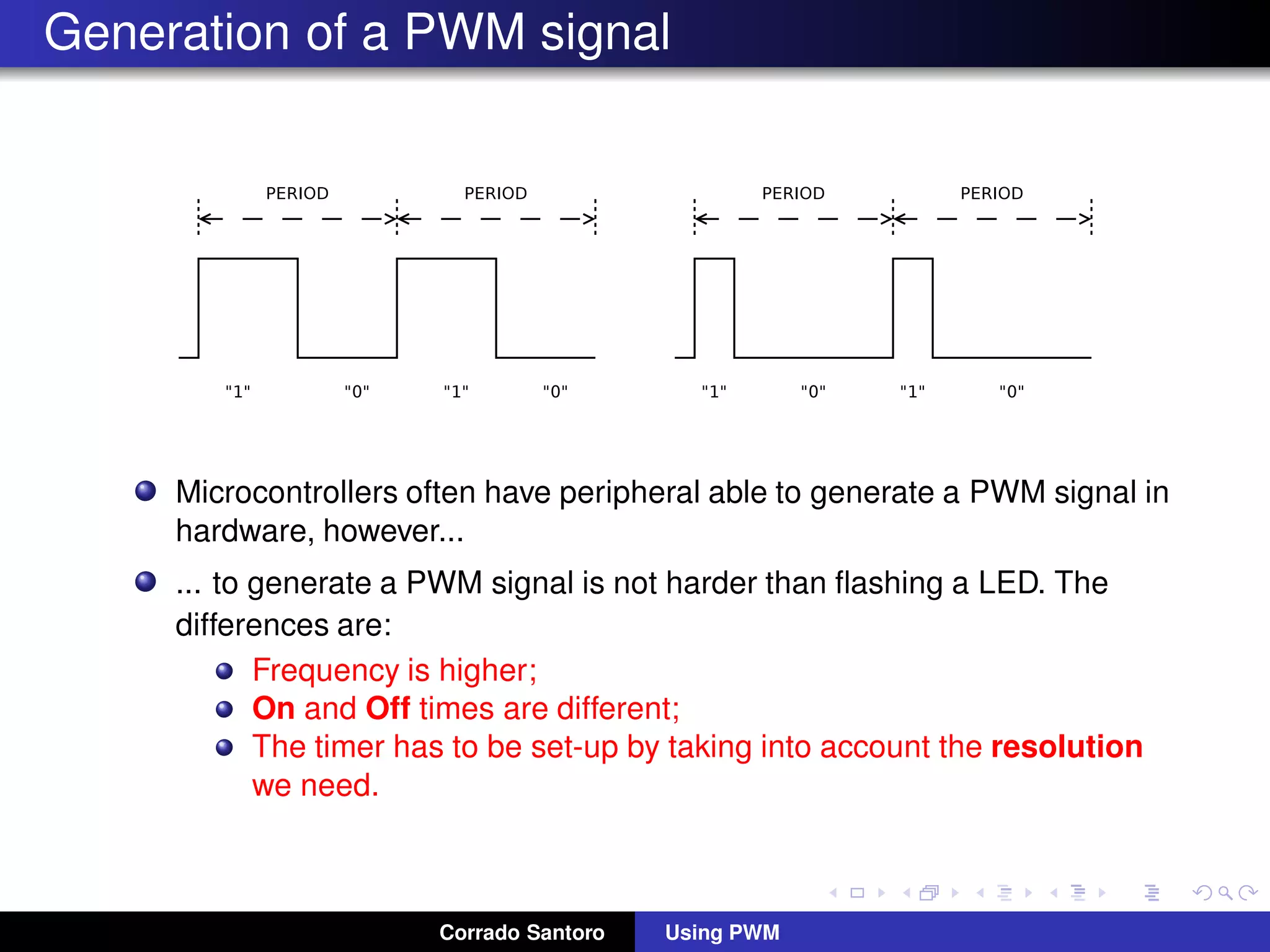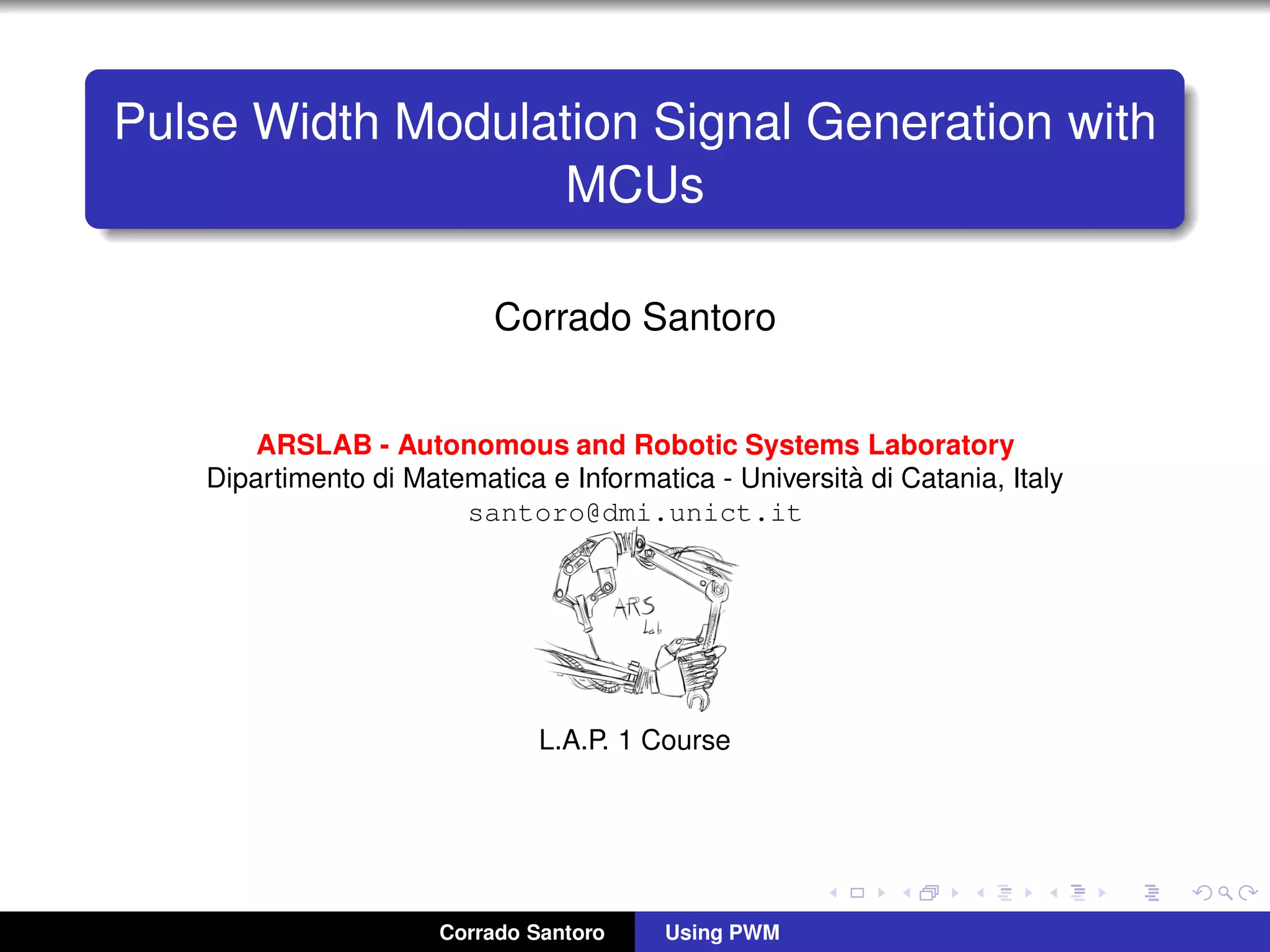Pulse Width Modulation (PWM) is a technique that modulates a digital signal to produce an analog effect. It generates a square wave with varying duty cycle, which is the ratio of the high pulse duration to the total period. PWM can be used to transfer analog values over digital lines, modulate intensity of lights and power systems like DC motors. While microcontrollers have hardware for PWM generation, it can also be done in software by setting a timer to produce pulses with frequencies and durations defined by the desired duty cycle.
